
Next-gen 2019 Honda Passport 21.3% UHSS steel, now on sale
By onAnnouncements | Market Trends | Repair Operations | Technology
Honda brought back the Passport last month with a 2019 model made of only 38.5 percent mild steel and carrying a variety of other advanced materials.
Honda in late January said the unibody, five-passenger SUV was similar in terms of body and chassis to the next-generation 2016 Pilot and 2017 Ridgeline.
“Fully 61.5 percent of the body structure is composed of advanced materials, including the application of ultra-high-strength steel to 21.3 percent of the body,” Honda wrote.
That ultra-high-strength steel includes 1,500-megapascal door reinforcement beams and and the Honda “front door outer stiffener rings” that have been a staple of recent Honda generations, according to the OEM.
The UHSS content means there’s 21.3 percent of the body you can’t section or cold-straighten, among other restrictions repairers and insurers must understand. Even some of the 34.6 percent of the Passport Honda defines as “high-strength-steel” might also carry restrictions not found on mild steel — particularly Honda’s 780-megapascal content. For that matter, even Honda mild steel of 270 MPa typically bars certain traditional repairer behavior, such as heat straightening.
Honda said it used seven steel grades on the 2019 Passport, which appears to be one more than it did in the 2016 Pilot and 2017 Ridgeline, based on Body Repair News overviews.
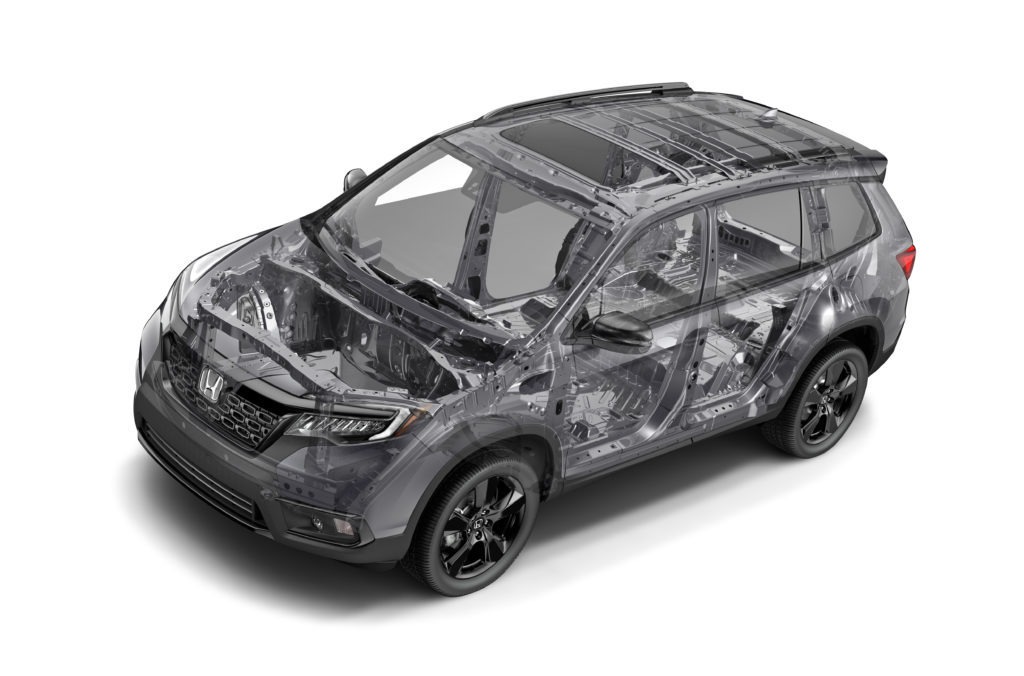
The highlighted two other steel body structures in a press kit Jan. 29. One was the vehicle’s “liftgate ring,” which it called “vitally important for good vehicle handling, stability and ride quality.”
“The liftgate ring contributes increased torsional rigidity, benefiting ride, handling and NVH,” Honda continued. “In addition, the liftgate ring connects structurally to the rear suspension fitting points, further improving overall body stiffness and providing the rear suspension with a more solid mounting structure.”
The SUV also has a “3-Bone” structure” under the front of the vehicle, a feature the OEM appears to have used on the Pilot and Ridgeline too. (The 2017 Ridgeline’s is seen in the diagram below.) Restoring its functionality will be important to keep your customer safe in a future crash.
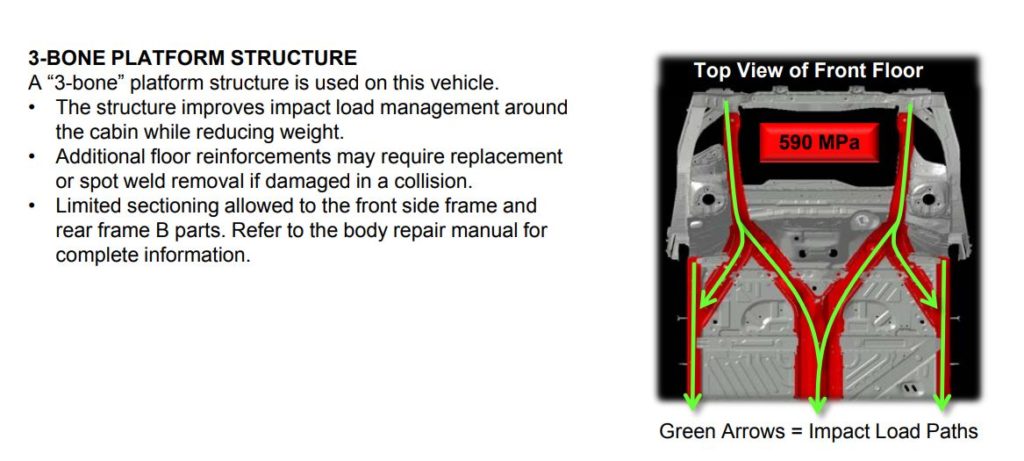
“The structure creates three different load pathways, or ‘backbones,’ that channel collision energy,” Honda wrote. “One channels collision forces from the front of the vehicle directly underneath the passenger cabin; the other two channel collision forces under the vehicle’s left and right-side frames. The result is an improved capability to safely channel energy during a frontal crash.”
Other materials
Honda said the 2019 Passport came in at 3.3 percent aluminum, including a hood and a front bumper beam it said “enhances structural integrity.”
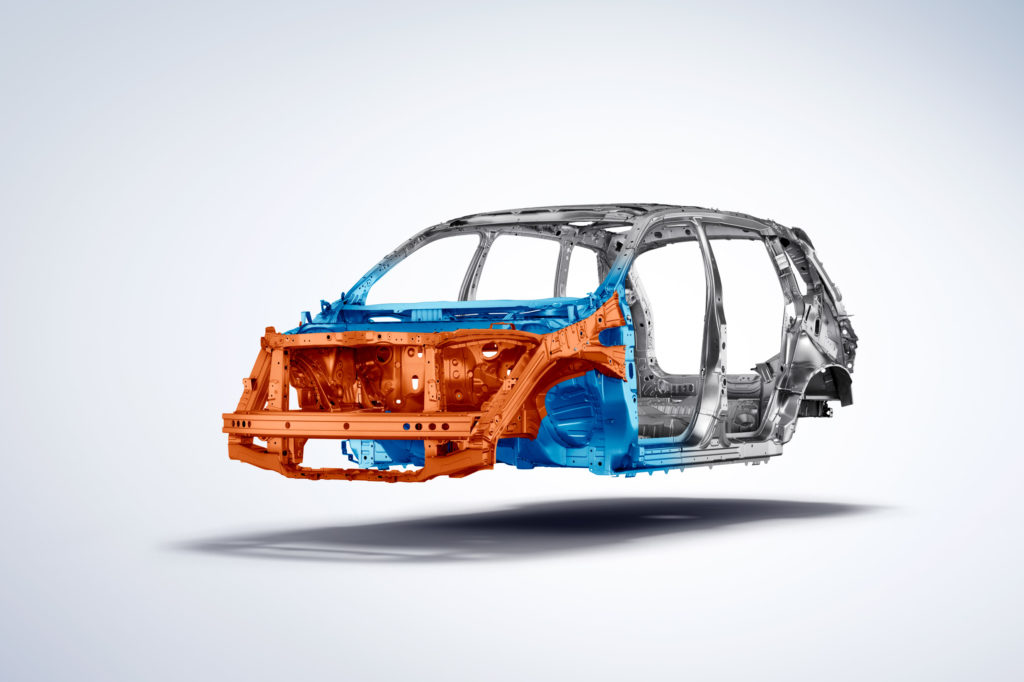
The vehicle’s 1.7 percent magnesium included a structural cast instrument panel (hanger beam) Honda says weighs 7.5 pounds less and is a better design than a steel version would have been.
“(C)reated from a single casting instead of multiple different extrusions and stampings, the new magnesium steering hanger beam offers more precise construction,” Honda wrote. “… (T)he exacting tolerances of the magnesium steering hanger beam allow for more precise location of the instrument panel for improved fit and finish.”
Honda listed another 0.6 percent of the body as “Other,” a reference to the Passport’s composites (including inside the B-pillars) and possibly its structural foam.
“Body stiffness and therefore safety performance and NVH is further enhanced through the use of structural foam inserts in key locations,” Honda wrote. “These include the left and right B-pillar stiffeners and inside a bracket that connects the left and right-side center frames under the front floor.”
The 2019 Passport Sport’s curb weight was either 3,959 or 4,149 pounds depending on if you splurged for all-wheel drive or not. The base body-on-frame 2002 Passport LX weighed between 3,820 and 4,053. However, the 2019 Passport is longer, higher and wider and should get better gas mileage — demonstrating the kind of lightweighting Honda achieved.
The aluminum hood might make it more difficult to manufacture an aftermarket version, but this might be moot anyway given what Honda says is the closure’s role in safety.
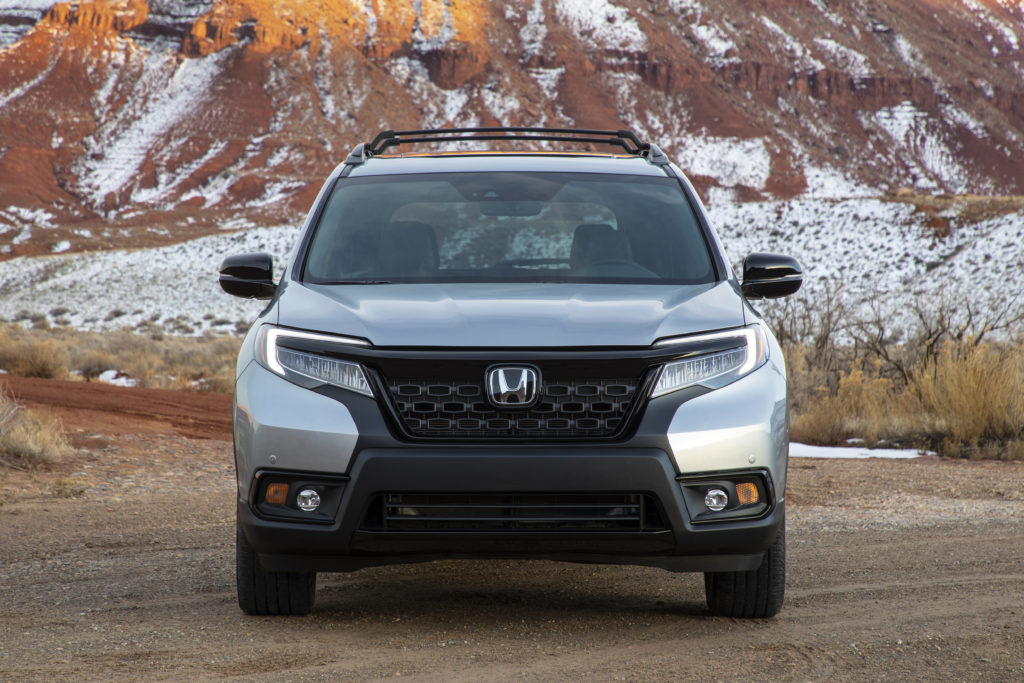
The Passport’s hood “is designed to deform if contact is made with either an adult or a child pedestrian,” and its hinges are meant to deform to protect pedestrians too, according to Honda. It said the hood also provides enough clearance from the engine to allow that deformation.
The base of the windshield and fender mounts and supports are also designed to absorb the energy of striking a pedestrian, and the windshield wiper pivots break away, Honda wrote.
Other structures
Collision repairers should also take note of other metal structural designs within the chassis of the vehicle.
Honda said the front suspension was “a strut-type system with forged-aluminum lower control arms, hydraulic bushings, coil springs and a solid stabilizer bar.” The rear suspension used a “compact multi-link design with a tubular stabilizer bar” and relied completely on steel for its control arms, “including the high-strength steel upper and lower control arms.”
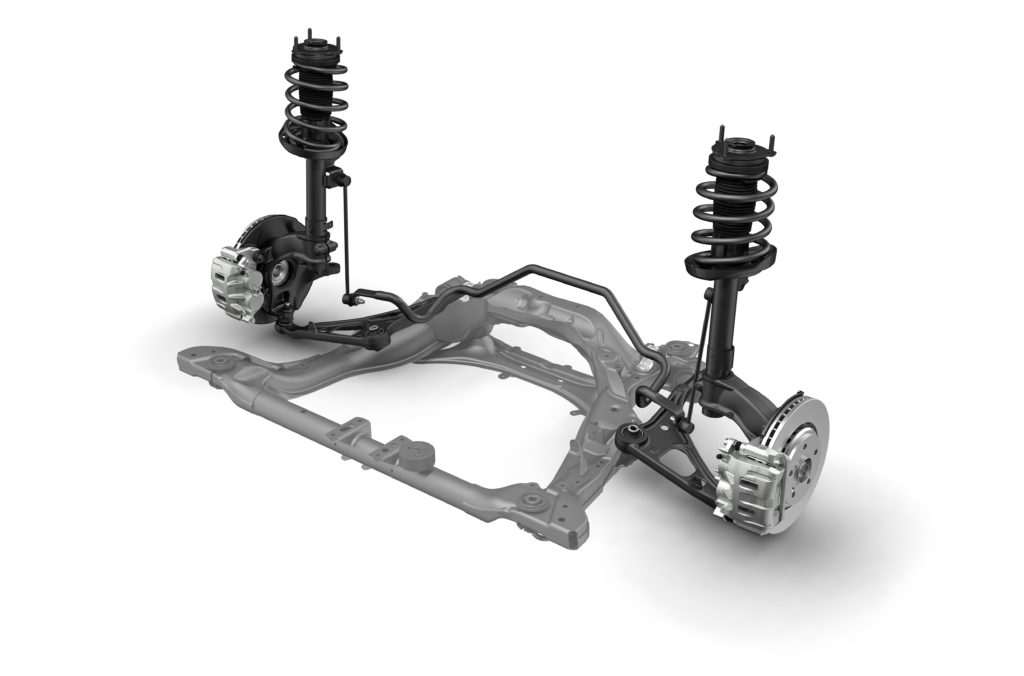
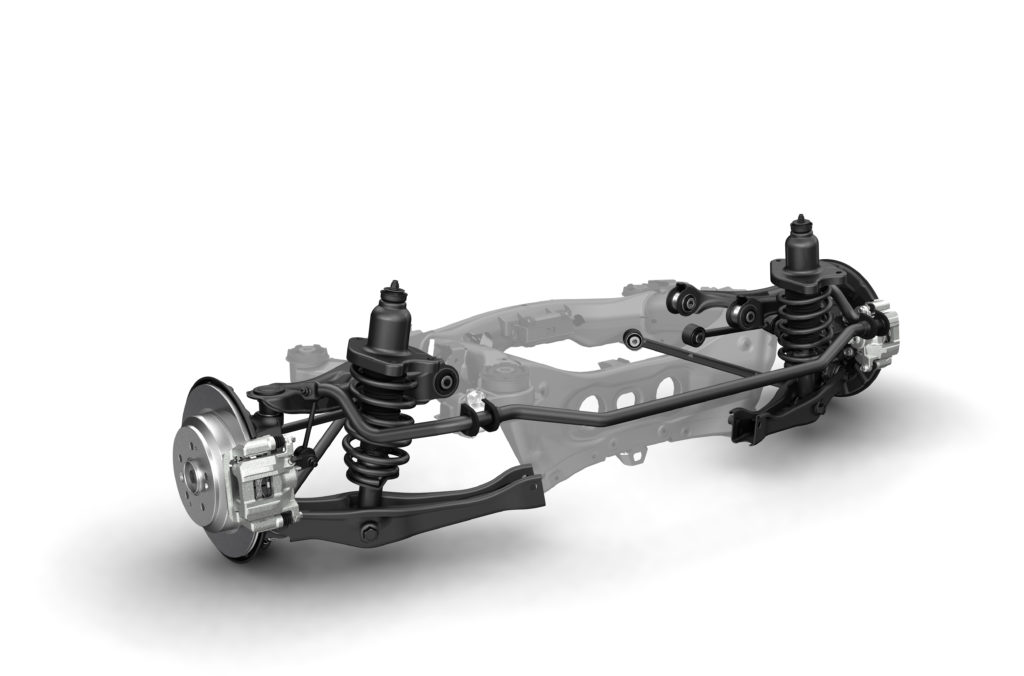
Repairers also should be aware of the possibility the vehicle won’t “feel right’ if other design elements of the Passport aren’t taken into account.
“Passport’s chassis structure transmits suspension loads to the rigid body side frame, allowing for more aggressive tuning of suspension bushings to aid both ride comfort and handling precision,” Honda wrote. “The transmission of road vibration to the rear seats is also significantly reduced.
“Passport’s engine, transmission, and front and rear suspension systems are mounted on rigid steel subframes,” Honda wrote. “These subframes attach to the unit body at rubber-isolated mounting points that help keep powertrain and road noise, vibration and harshness (NVH) out of the passenger cabin. Two of the rear subframe mounts are filled with specially tuned hydraulic fluid for maximum effectiveness. Permanently sealed, they require no scheduled maintenance. The rear subframe is particularly sophisticated, with hydroformed side elements for maximum strength and minimal weight.”
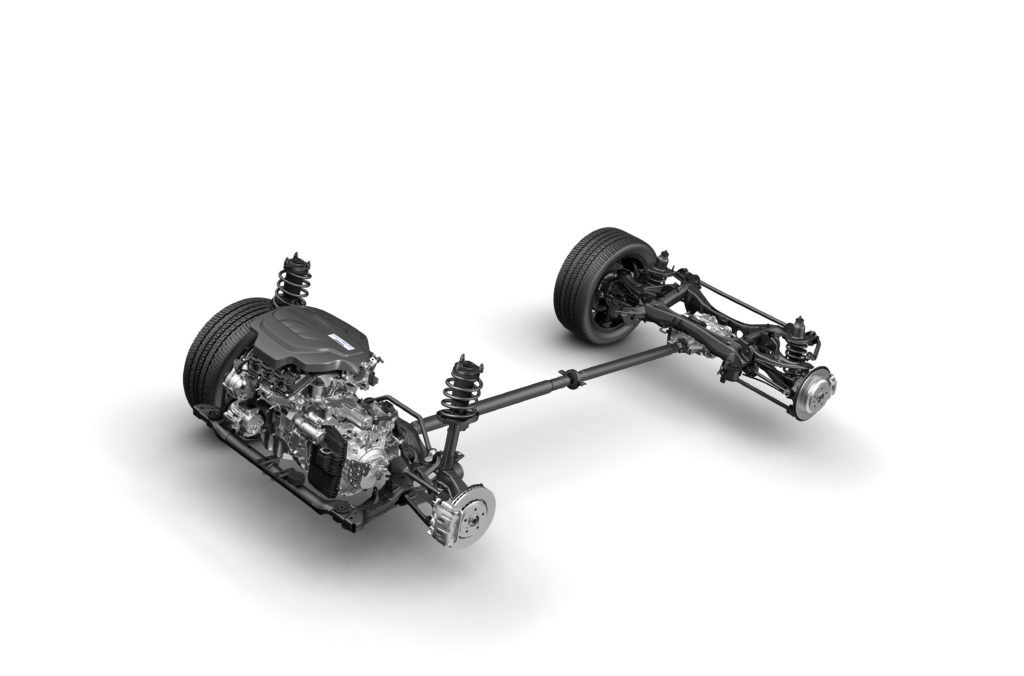
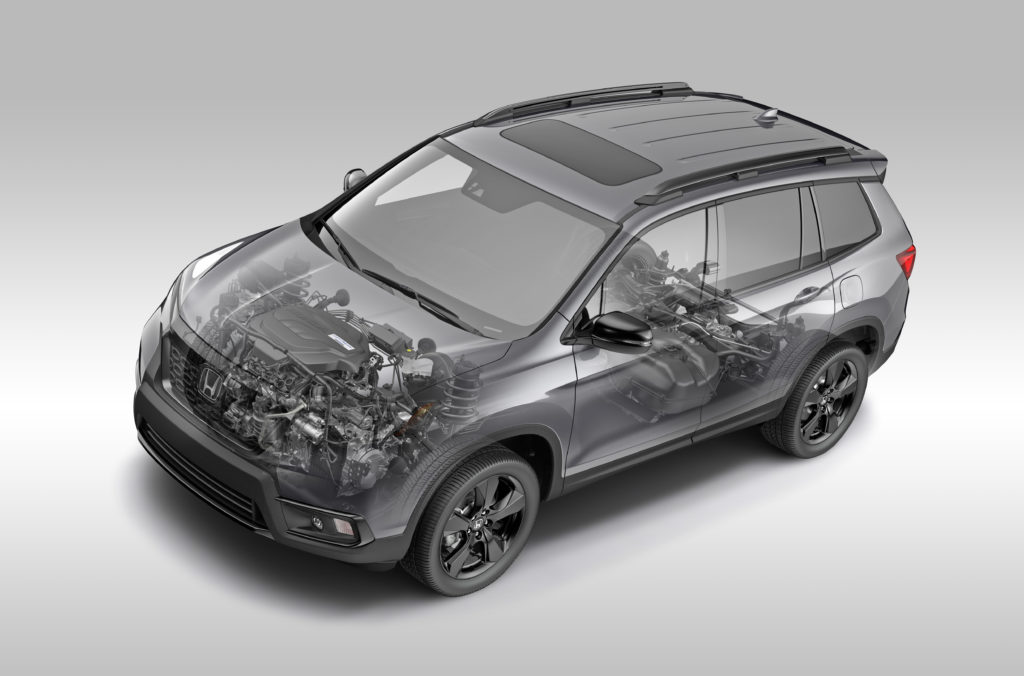
NVH
Other features meant to deliver a smoother and quieter ride to the Passport’s five passengers are likely to affect the collision repair process or its severity.
“All Passports feature strategically placed body sealants and rear door acoustic foam barriers for additional sound attenuation,” Honda wrote. “Additional NVH enhancements on all models include acoustic separators applied to the lower front portion of the doorframe, upper inside and upper outside portions of the A-pillar, the lower portion of the B-pillar, the rear portion of the rear doorframe, the outboard locations of the rear cross member, and the upper portion of the C-pillar. Further treatment for all models includes sound absorbers in the rear side linings, acoustic treatment on the rear wheelhouse liners and sound insulation in the liftgate.”
The base “Sport” model is the only one lacking acoustic windshield glass, and the top two Touring and Elite grades both have acoustic front and rear door windows.
The Touring and Elite grades also contain wheel resonators and extra front door foam barriers.
Other features
Other Passport features which might also be of interest to collision repairers include:
- The Honda Sensing advanced driver assistance suite is standard across the board and includes autobraking, adaptive cruise control and lane keeping.
- The low-beam headlights are LED on all four trims, as are the taillights and daytime running lights. The second-best Touring trim adds LED high beams.
- The third-place EX-L trim has a moonroof and blind spot monitoring. The Touring trim adds body-color parking sensors, a hands-free liftgate, and the top Elite trim has gloss-black exterior trim and a spoiler.
- The EX-L’s side mirrors are heated, the Touring lets them power-fold too, and the Elite auto-dims them on top of all of that. The rearview mirror autodims at night on all but the base Sport trim.
- You can get a 2019 Passport in eight colors, including six pearls and two metallics. The door handles are painted the body color.
The Passport went on sale Feb. 4. It starts at $33,035 for the two-wheel drive Sport, and the Elite costs $44,725. Given the public’s appetite for CUVs and SUVs, you’re likely to see quite a few of them.
More information:
“2019 Honda Passport Press Kit”
Honda, Jan. 29, 2019
Honda steel repairability matrix
Images:
The 2019 Honda Passport Elite is shown. (Provided by Honda)
The 2019 Honda Passport’s body is shown. (Provided by Honda)
The 2017 Honda Ridgeline’s “3-bone” structure is shown in this 2016 Honda Body Repair News diagram. (Provided by Honda)
The 2019 Honda Passport’s front-end body design is shown. (Provided by Honda)
The 2019 Honda Passport’s front suspension is shown. (Provided by Honda)
The 2019 Honda Passport’s rear suspension is shown. (Provided by Honda)
The powertrain of the 2019 Honda Passport is shown. (Provided by Honda)
